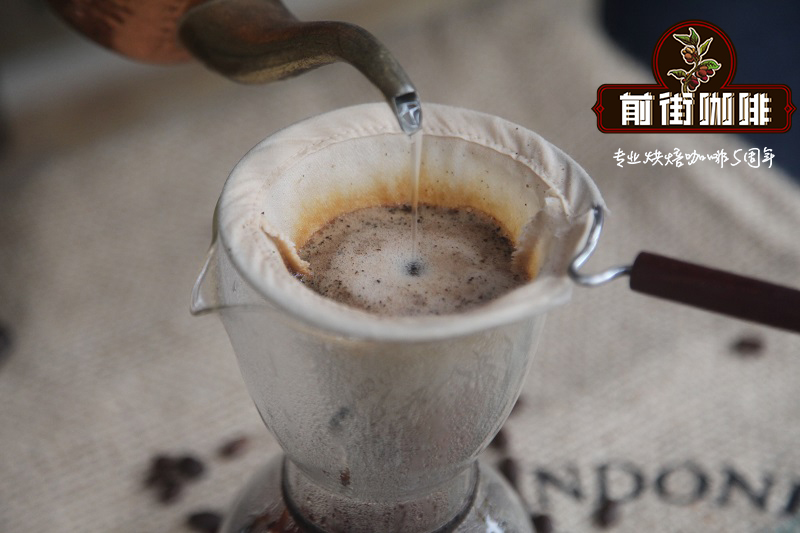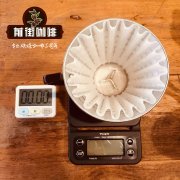What kinds of coffee beans do you have in Latin America? How much is the price of Latin American coffee beans? half a pound

Professional coffee knowledge exchange more coffee bean information please follow the coffee workshop (Wechat official account cafe_style)
At present, there are so many kinds of coffee beans imported from all over the world that there is no choice. Here we will introduce the main producing areas and characteristics of coffee beans in Latin America as a reference for the selection and purchase of coffee.
Central and South America
Characteristics of taste: balanced, moderate acidity and mellow taste
Central and South America is the largest coffee producing area in the world, and there are countless boutique coffee here. Take Colombia, Guatemala or Brazil as an example, good coffee is enough to make people dazzling. What is the resource advantage that makes Central and South America so good?
In 1721, French naval officer Gabriel Mathieu de Clieu went through difficulties and obstacles to bring the first coffee sapling from Africa to the Latin American island of Martinique, which was the origin of coffee cultivation in Latin America. Because France was under the Bourbon dynasty, Arabica coffee grown in Latin America had another name, bourbon, which is now famous in the coffee industry. Bourbon is now an important branch of coffee in Arabica.
The overall flavor of Latin American coffee is famous for its balance, and all the flavors in Latin American coffee can be found in Latin American coffee. The widespread use of wet treatment of raw beans is also one of the characteristics of Latin American coffee, good processing also makes its beans larger and more uniform than African coffee, and the defect rate is lower.
■ Brazil (South America)
The largest coffee producer, which accounts for 1/3 of the world's coffee consumption, accounts for 1/3 of the world's coffee consumption and has a place in the global coffee market, although Brazil faces several times more natural disasters than other regions. but its acreage is enough to make up for it.
There are many kinds of coffee here, but its industrial policy is large and cheap, so there is not much premium coffee, but it is a good choice for mixing other coffees.
One of the most famous is Sandos Coffee, which tastes mellow and neutral. It can be boiled directly or mixed with other kinds of coffee beans to form a comprehensive coffee. It is also a good choice.
Other kinds of Brazilian coffee, such as Rio and Parana, can be produced in large quantities because they do not need too much care. Although the taste is rough, it is a kind of high-quality and inexpensive coffee, which has its own standards because it is distributed all over the country and varies in quality (NO.2-NO.8 according to the number of sundries, NO.13--NO.19 according to the size of beans, and six grades according to taste). Almost all Arabica varieties are of good quality and stable in price. The most famous one is "Brazil Santos", which has been a necessity of blended coffee and is familiar to the public since ancient times. Recently, the "Guilma Cup" is also highly rated.
● quality beans: Sangduo NO.2, size NO.18
The characteristics of ● taste: mild, bitter medium, soft flavor.
The best fried culture degree of ●: medium fried culture.
■ Colombia (South America)
This is the second largest coffee industry after Brazil, and is also the leader in the Columbia Maird Group (Colombia, Tanzania, Kenya). In addition, there are Asa Maird, Anwar Snow Arabica, Robusta). The more famous producing areas, such as "Medellin", "Manizares", "Bogota" and "Armenia", etc., all the coffee beans cultivated are Anicabi species, which are quite rich in taste and stable in quality and price. The fried coffee beans are even bigger and more beautiful.
From low-grade products to high-grade products can be produced, some of which are rare good goods in the world, the taste is so mellow that people can't put it down.
● quality beans: Columbia Spremer / Echesellon (other than Spremer, larger particles)
The characteristics of ● taste: sour, bitter, sweet and strong, the color is like a good wine.
The best frying degree of ●: medium-depth
■ Mexico (Central America)
This major coffee producer in Central America, the coffee here is comfortable and charming. The Mexican coffee selected are Coatepec, Huatusco and Orizaba, of which Cottpe is considered to be one of the best in the world.
The coffee cultivation belt of this country is similar to Guatemala in the south in terms of geographical and climatic conditions, so it is included in the scope of "China and the United States". The main producing areas are in Goa DiBuick, Oaxaca and other states, especially the water-washed coffee beans from the highlands, which have excellent aroma and sour taste. according to the elevation, the specifications are divided into three categories: Aldora (4000-4200 ft), Prima Labado (2800-3300 ft) and Boone Labado (2100-2500 ft). Most of the products are sold to the United States.
● quality beans: Aldora, Mexico
The characteristics of ● taste: the grains are large and sour and sweet, with strong flavor.
The best frying degree of ●: medium-depth
■ Guatemala (Central America)
The central region of Guatemala is home to world-famous coffee with excellent flavor. Most of the coffee beans here have charcoal flavor and cocoa flavor, but their acidity is slightly stronger.
These are the most familiar coffee beans in Japan, and the first place of origin is in San M á rquez, which is close to the mountains of Mexico. The second place of production is Caesar Denango, who is difficult to make. Other brothers and gangs and Antigua are also very famous. Slightly sour, mellow and smooth, it is the best material for mixed coffee. The classification is divided into seven grades according to the elevation. The higher the origin, the more mellow the coffee beans are, while the coffee beans from the lower areas are of lower quality.
● quality beans: Guatemala SHB
The characteristics of ● taste: bitter and fragrant, good taste.
The best frying degree of ●: depth
■ El Salvador (Central America)
It is listed as the producer of Asa Merdo Group together with Mexico and Guatemala, and is fighting for the top one or two places in China and the United States with other countries. The highlands of origin are large coffee beans of all sizes, which are fragrant and mild in taste. It is also divided into three grades according to elevation: SHB (strictly high grown) = highland, HEC (high grown central) = mid-highland, and CS (central standard) = lowland.
● quality beans: El Salvador SHB
● taste characteristics: sour, bitter, sweet mild and moderate.
The best frying degree of ●: medium-depth
■ Honduras (Central America)
The washed coffee beans in the mountain areas are well received, while the coffee beans produced in the lowlands are of lower quality. Well-known producing areas are Santa Barra, Gracias, Komayagya in the east, and Chortika near Nicaragua. Coffee beans range in size from medium to large and are characterized by a mild taste. The quality products here are also marked up and divided into three grades.
● quality bean: Honduras SHB
The characteristics of ● taste: sour and slightly sweet.
The best frying degree of ●: medium-depth
■ Costa Rica (Central America)
The coffee beans produced at the high latitudes of Costa Rica are famous in the world, full-bodied, mild in taste, but extremely sour. The coffee beans here have been carefully processed, which is why they have high quality coffee.
The famous coffee is produced in the Central Plateau (Central Plateau), where the soil consists of successive layers of volcanic ash and dust.
The first-class fragrance is strong and sour, and it is highly valued. The place of production can be roughly divided into three areas: the Pacific coast, the Atlantic coast and the middle zone, and each is graded according to its elevation. All the coffee beans are quite large, especially the sour and fragrant coffee beans produced in the high areas of the Pacific coast are the first-class coffee beans, and there is a new brand of "Clarke Hill". The coffee beans of the lowlands along the Atlantic coast are sour rather than mellow and have nothing special.
● quality beans: Costa Rica Clara Mountain
The characteristics of ● taste: moderate acidity and mellow taste.
The best frying degree of ●: medium
■ Cuba (West Indies)
Cuba, famous for producing sugar, tobacco and coffee, is a republic made up of Cuba, the largest island in the West Indies, and other affiliated islands. Coffee was introduced by the French from Haiti in the middle of the 18th century. The coffee beans are characterized by large ─ grains and bright green high-quality coffee beans. The grades are divided into ETL (extra Super Grade), TL (Middle Pole) and AL (ordinary) according to the size of coffee beans. "Clydale Mountain" is Cuba's proudest high-quality, large-shaped coffee beans.
Quality beans on ●: Mount Crisdale, Cuba
The characteristic of ● taste: the taste is stable. A balance of sour, bitter and sweet.
The best frying degree of ●: medium
■ Jamaica (West Indies)
Jamaica's national treasure, Blue Mountain Coffee, is flawless in every way, just like wine, many wineries are now bought by the Japanese.
The Japanese have bought most of the Jamaican coffee in recent years, so it is very difficult to buy it in the market. It is said that it has not been available in Britain for four years, and the spending power of Easterners is really staggering.
Jamaica is a republic of large and small islands in the Caribbean. Coffee is cultivated on the Yumai slope on Hengduan Island, and the producing area can be divided into three areas: BM (Blue Mountain) and HM (Alpine) PW (Plame washed coffee beans), which are also the brand names of coffee. The ranking of quality and price is 1, 2, 3, and the ranking of production is 3, 2, 1. Among them, the flavor, aroma, strong and sour taste of "Blue Mountain" are all very average and highly appraised. Almost all the products are sold to Japan.
● quality beans: blue Mountain / High Mountain
The characteristics of ● taste: it has the same sour, bitter, sweet and good flavor.
The best frying degree of ●: mild to moderate
■ Bolivia
South America is rich in coffee beans, and Bolivia is no exception. The unique tropical rain forest environment in some parts of Bolivia provides excellent natural conditions for the growth of organic coffee. The aroma of Bolivian coffee is rich and unique, both the aroma of ground beans and the aroma of coffee are obviously rich, similar to the mixture of flower and fruit aroma, impressive.
The advantage of Bolivian coffee lies in its high altitude and excellent varieties of coffee, where the traditional Tibica and a small amount of Kaddura are highly valued in the world market. In the past, coffee trees in Bolivia used to act as hedges and ornaments around the garden. Real commercial production began in the early 1950s. The coffee industry in Brazil was badly damaged by the great frost in 1957, while Bolivia (Bolivia) benefited and developed rapidly. Bolivian coffee is grown at an altitude of 18000 to 2670 meters above sea level, and the Arabic washed coffee beans are exported to Germany and Sweden, which is not the best today and has a bitter taste.
Quality beans on ●: Lake Titicaca
● flavor features: dry aromas of roasted nuts and almonds, sweet caramel, smooth texture of nut milk, cleanliness and balance
The best frying degree of ●: medium
Latin American coffee bean brand recommendation
All kinds of Latin American coffee beans baked in Qianjie Coffee are fully guaranteed in brand and quality. And more importantly, the performance-to-price ratio is extremely high, a pack of half a pound 227 grams, the price is only 80-90 yuan. According to the calculation of 15 grams of powder per cup of coffee, a bag of coffee can make 15 cups of coffee, which costs only about 5 or 6 yuan per cup, which is recommended by conscience compared to the price sold in cafes for hundreds of yuan a cup.
Important Notice :
前街咖啡 FrontStreet Coffee has moved to new addredd:
FrontStreet Coffee Address: 315,Donghua East Road,GuangZhou
Tel:020 38364473
- Prev

How are Ethiopian coffee beans roasted? What are the recommendations of Ethiopian coffee brands?
Professional coffee knowledge exchange more coffee bean information please follow Coffee Workshop (Wechat official account cafe_style) Ethiopia Natural Yirgacheffe Chelelektu Ethiopian coffee beans Yega Xuefei figure G01 | production area profile unique geographical environment Yirgacheffe is a small town in Ethiopia, 1700-2100 meters above sea level, is
- Next

What do you recommend in Latin American coffee producing areas? how much is a cup of Latin American coffee?
Professional coffee knowledge exchange more coffee bean information please follow the coffee workshop (Wechat official account cafe_style) in terms of production, coffee beans in Latin America account for about 60% of the world's coffee production, Africa and Arabia account for about 20%, and the remaining 20% are distributed in Asian countries and islands. In South America, Brazil accounts for 30-50% of the world's output, Goran.
Related
- Does Rose Summer choose Blue, Green or Red? Detailed explanation of Rose Summer Coffee plots and Classification in Panamanian Jade Manor
- What is the difference between the origin, producing area, processing plant, cooperative and manor of coffee beans?
- How fine does the espresso powder fit? how to grind the espresso?
- Sca coffee roasting degree color card coffee roasting degree 8 roasting color values what do you mean?
- The practice of lattes: how to make lattes at home
- Introduction to Indonesian Fine Coffee beans-- Java Coffee producing area of Indonesian Arabica Coffee
- How much will the flavor of light and medium roasted rose summer be expressed? What baking level is rose summer suitable for?
- Introduction to the characteristics of washing, sun-drying or wet-planing coffee commonly used in Mantenin, Indonesia
- Price characteristics of Arabica Coffee Bean Starbucks introduction to Manning Coffee Bean Taste producing area Variety Manor
- What is the authentic Yega flavor? What are the flavor characteristics of the really excellent Yejasuffi coffee beans?

